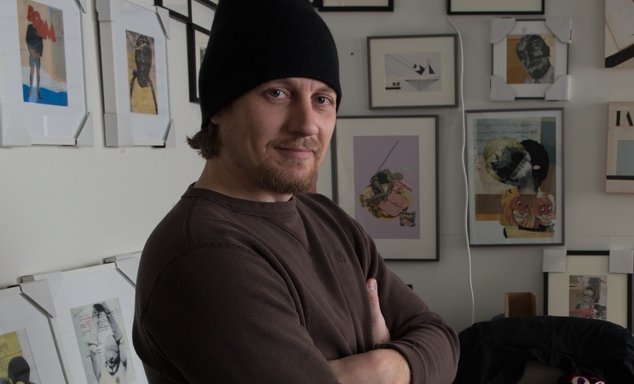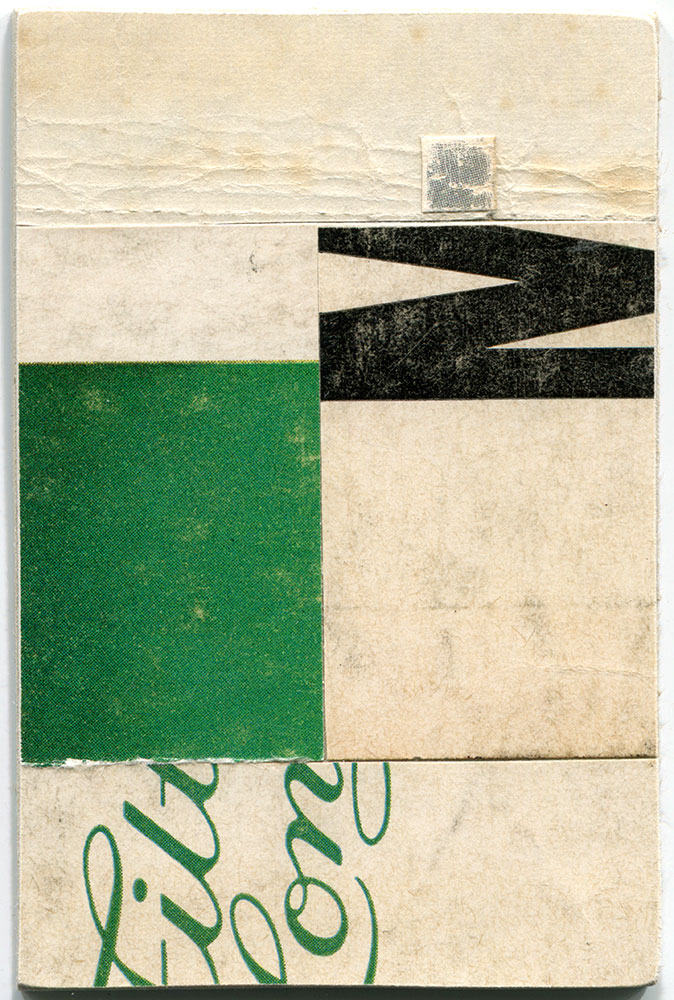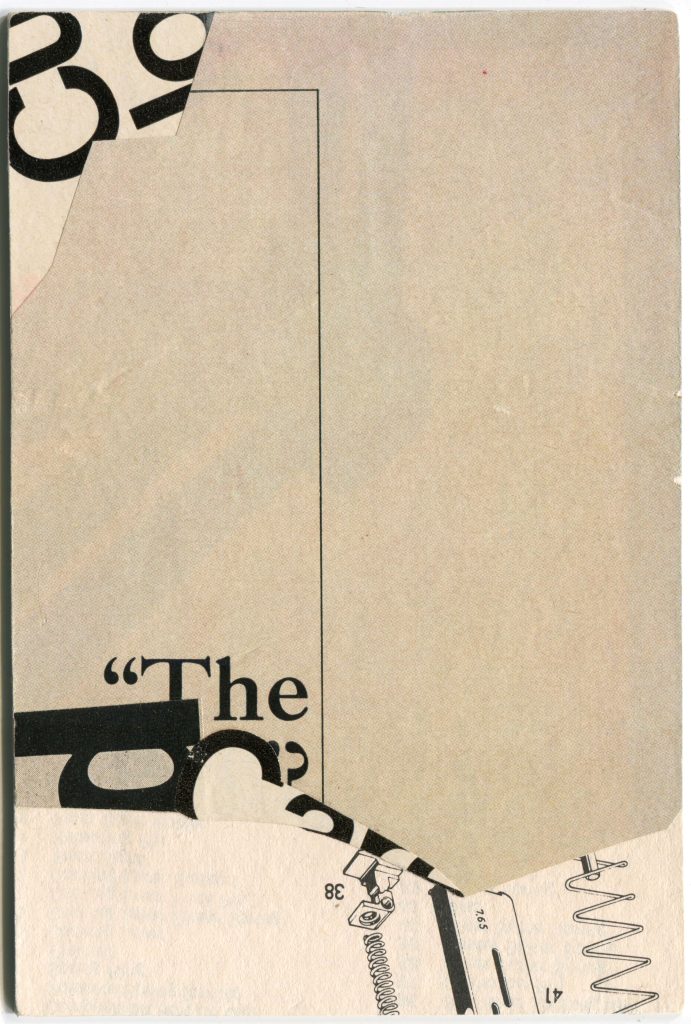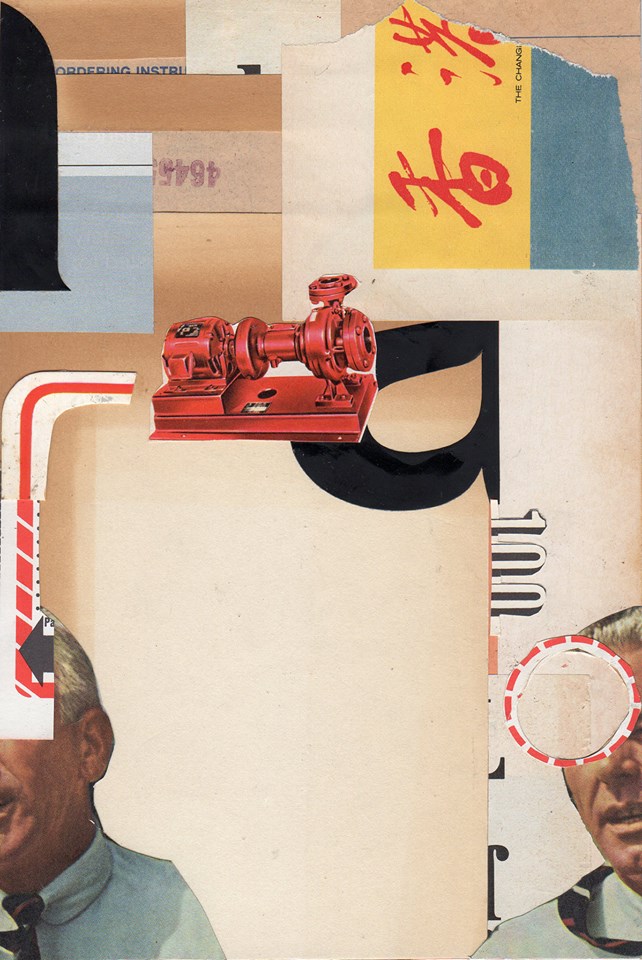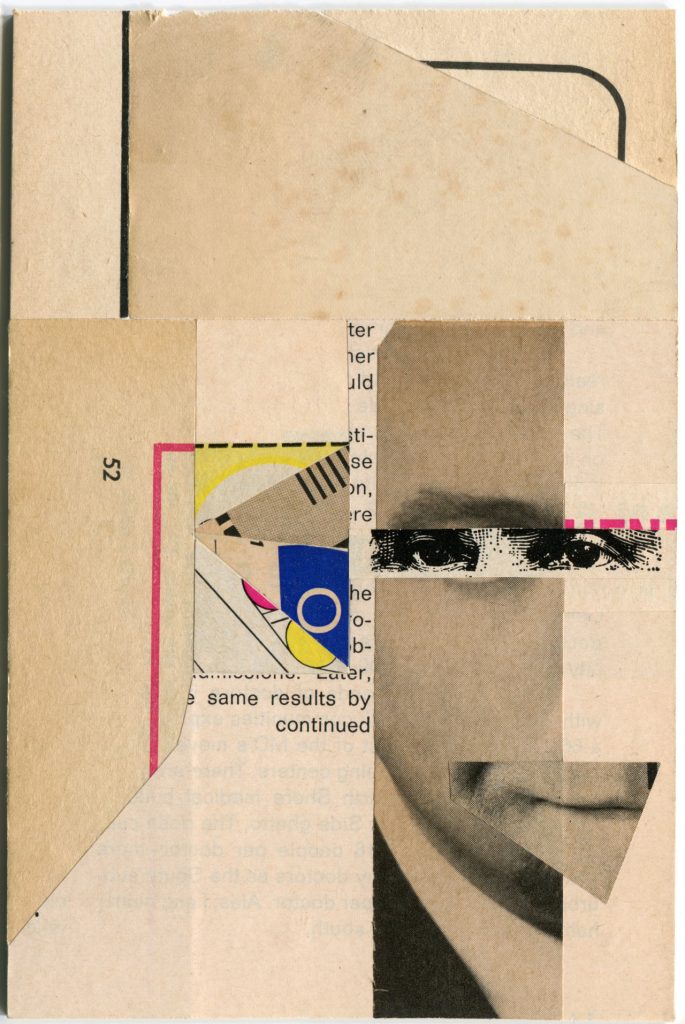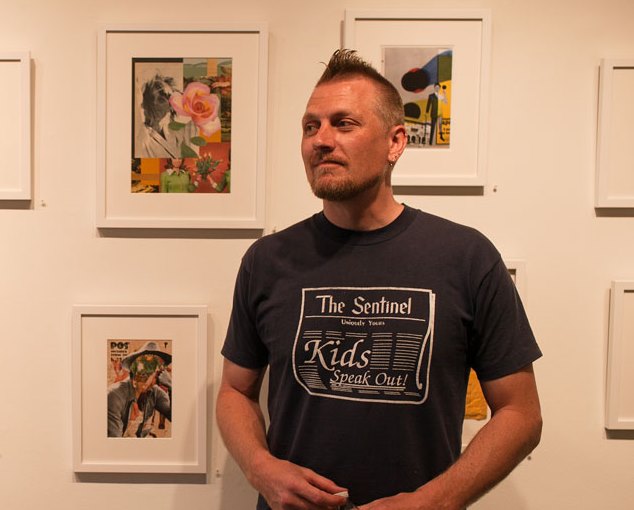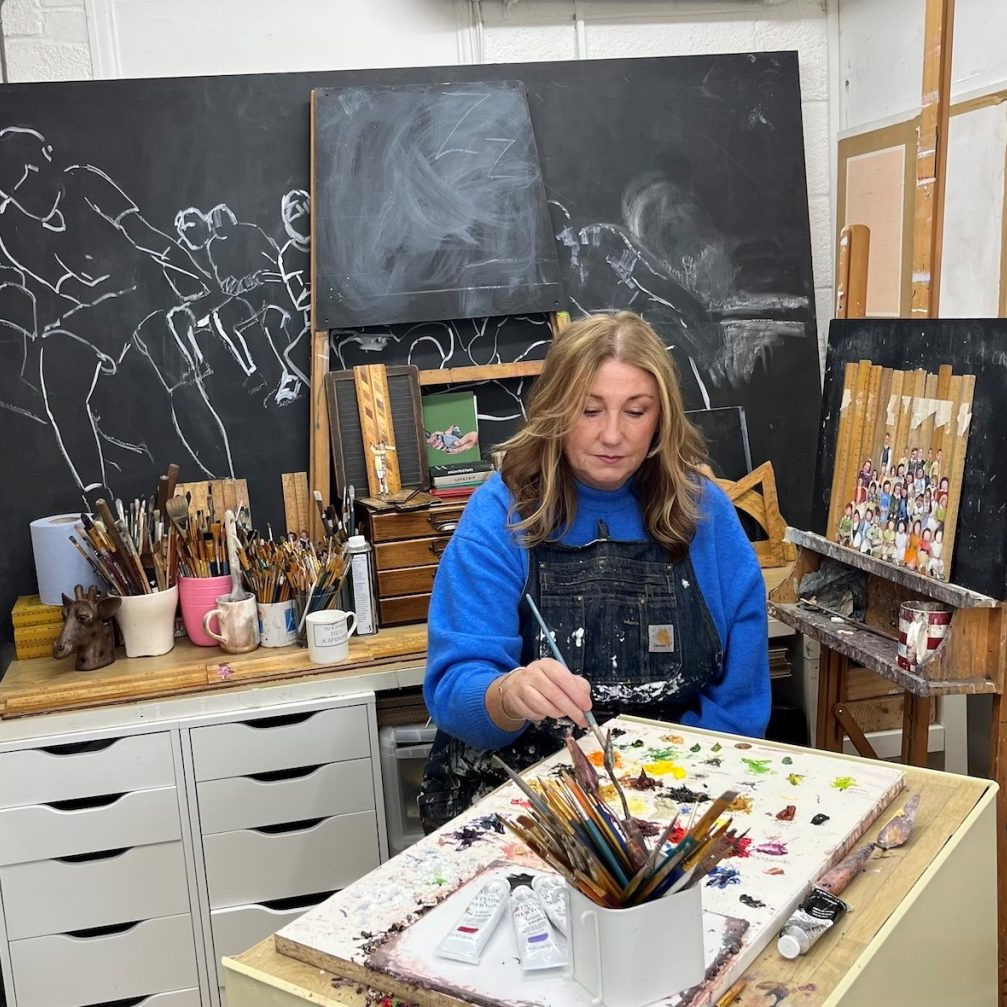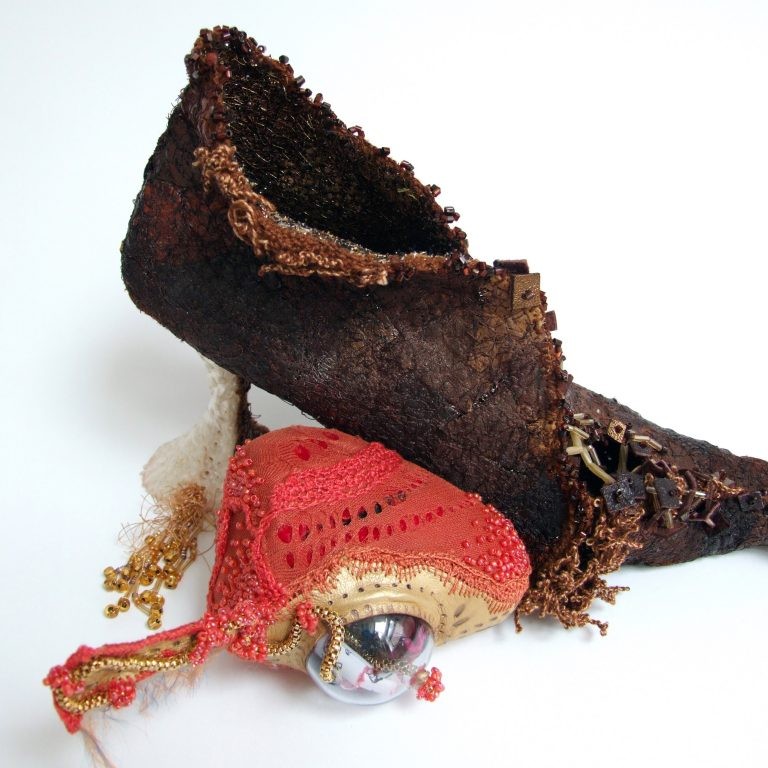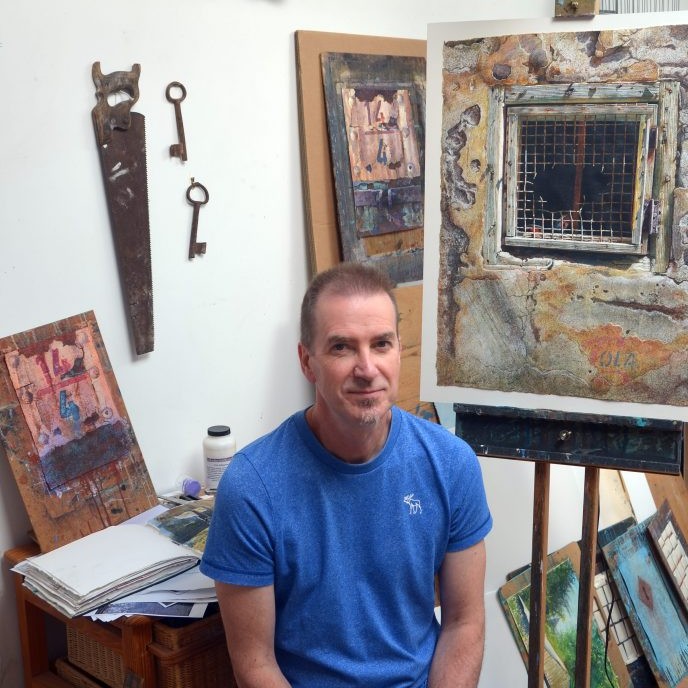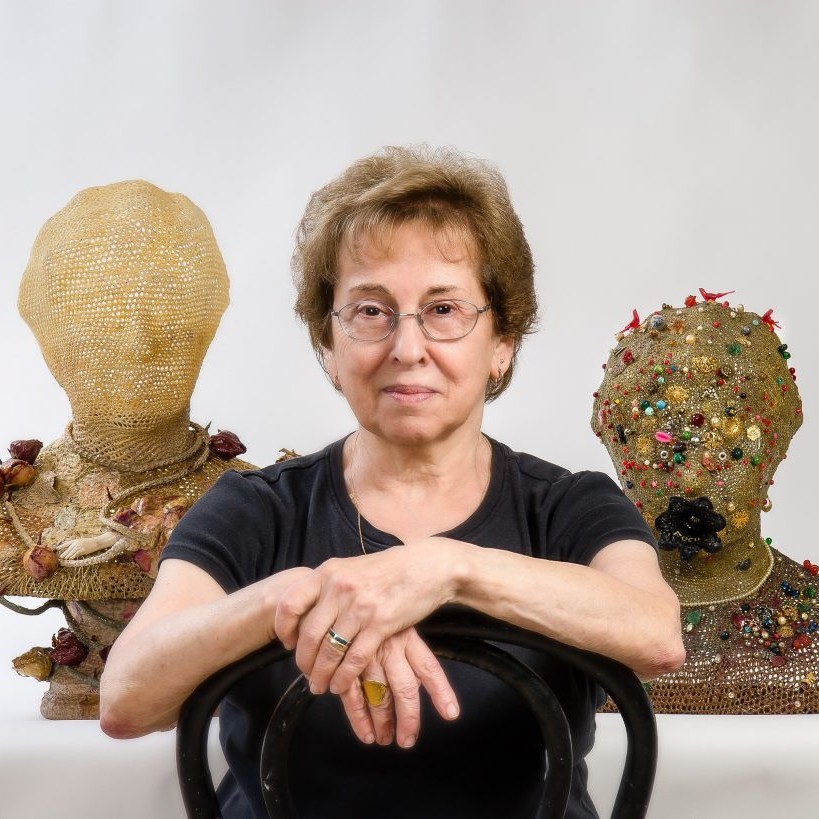Zach Collins Collage Artist - Saint Paul, Minnesota USA
Can you explain what you understand as Analog Collage?
Analog Collage is term used to contrast “Digital Collage”. For me, this includes manually working with our hands: cutting, ripping, and gluing.
What is it about the technique that you find so obsessive?
It may seem to be obsessive to some but I like to think of it as a more of a constant awareness. I am now more aware of my immediate environment, always scanning and searching for materials to use in my collages. I am aware that this is a mobile medium and is perfect size to bring along with me when traveling. I am able to continue to work, create, collect while away from my studio. I look at it as a great way to be productive finding materials on the ground while on a jog, visiting my parents, or in waiting room at the doctor’s office. My studio is everywhere I go.
You say “I enjoy the hunt for materials” what have been several very interesting finds?
I have found some great items at 2nd hand stores and estate sales, but to me there is nothing better than getting the materials for free. A few years ago, I saved a box that had several artist books in it from the dumpster. The artist books included a couple of Mimmo Rotella books, as well as some of his hand written, personal letters and postcards.
How do you store the material and catalogue it for find later?
I am not the most organized, but have several bookshelves that I keep my magazines and books on. I have a large pile of cut out images, some materials separated by color, text and one box full with patina of age.
Do you look for a particular series or does this happen after the initial find?
I am continually making and usually without the intent of doing a series. During this process of recombination chance is very important and I welcome it to shape or create the outcome. I am ultimately in control of every decision. In most cases I base these decisions completely on the elements of composition, color, shape, process and surface.
Can you explain the process involved in ‘Recycled Trophies ‘explain the production and collaborations?
I met Aaron Beebe online and we both liked each others work. We decided to collaborate with the idea in mind for each of us to do an equal number of starter collages to send to the other to finish. The procedure was a simple two step process of a “start” and “finish”. We could add as little or as much to the starters. Once we received the starters in the mail we could add to, cover up, or tear off elements as we saw fit to finish the collages. No rules applied other than an agreed upon size and equal number of starts and finishes.
What did you personally learn from this project?
From the beginning the outcome was to produce a book. I think with that in mind trust became a large issue. Aaron and I both had to trust each other and let go of our creations (starter collages) and accept the outcome. With our work headed for publication in a book, questions of art ownership came up. Did we need to mention who started and who finished? Ultimately we liked the idea on not mentioning that in the book. Each of us did the same amount of starts and finishes. It was important that we both were equally responsible for the book as a whole. Not listing who did what on each collage, I feel, drew attention away from our individual names and focused it more fully on the artwork produced.
How large and small are your collages and why the particular size?
I have mostly worked between 1×1.5 inches to 9×12 inches but have done works on panels up to 2×4 feet. Since I do not use digital means for my material search, nor do I scan in materials to enlarge and print out materials for my convenience, the size of my work usually relies on the size of materials that I have to work with. These tend to be books and magazines.
What restrictions if any does your collage work have?
I am restricted only by the materials I have available to me.
You have both a BA in Fine Arts and a MFA what has this background in the Fine Arts given you in your current work?
While working toward my undergraduate degree, my instructors instilled in me the basic design rules which have become the foundation on which all my art is built. At graduate school, I learned to look inward to understand my motives for creating art, and developed an intense focus on collage including its methods, history, symbiotics/visual language and the impact the collaborative affect has on them.
Take us through the technical process of a piece of your work?
For my personal work I usually don’t have an idea planned out. My process starts by selecting a couple pieces that intrigue me. This could be an image, text or a discolored, stained, and marked up piece. Then I start sifting through the scraps covering my desk. Slowly building up the collage until I feel it is complete.
How often does damage on a piece of material give you inspiration?
In almost every case! It is thrilling for me to find resources with the patina of age as well as evidence of the past with handwriting, stains and scuffs. I feel it is more rewarding to find my materials this way rather than artificially altering them.
How important can text be to your work?
Text can be a very powerful element in collage. I generally avoid legible text in my work because I don’t intend for the viewer to derive any meaning from it. My work is animated by the steady and inevitable deterioration of signification. When I do incorporate text into my pieces, it is often text in the form of a single letter/number or I might cut off the ascenders and descenders.
Besides the Title you have numbers and letters can you explain this? Eg.148ZC14
It is hard to keep track of the many collages I have made. I created this system to simply catalogue and number them. For Example “148zc14” stands for the 148th collage by ZC (my initials) I made in 2014.
How important has it been for you to find Galleries such as Nisa Touchon Fine Art to promote you work?
I feel incredibly honored be represented by Cecil and Nisa Touchon Fine Art Gallery at their new location in Santa Fe, New Mexico. A few years ago I had the pleasure of meeting with Cecil Touchon in Pagosa Springs, Colorado. He showed me around The International Museum of Collage Assemblage and Construction and graciously invited me to visit his studio. He was very helpful sharing some tips and tricks of the trade with a relative newcomer to the medium.
http://collagemuseum.com/index.html
Discuss the importance of the contemporary art scene to the development of your work?
It is very essential to me as my personal work has been shaped through the collaborative process. Now, as in the past, collaboration continues to draw artists together in ways that allow us to trigger each other’s creativity and artistic energy as well as to grasp opportunities to learn from each other’s diverse cultures and backgrounds. Every starter collage presents a new opportunity, and I found myself adapting and working in ways that I felt complimented the original artist, expanding my knowledge and skill set along the way. Fragmentation in collage lays the foundation for new forms to develop, and collaboration amplifies this.
More Literally, the recent trends in contemporary art that are embracing very mixed media and inter/multidisciplinary work are important and exciting. I try not to restrict my collaborative partners to other collage artists. I enjoy working with illustrators animators graphic designers and even sculptors. As a result my work often embodies this multidisciplinary style.I feel this keeps me fresh and engaged with the contemporary art scene at large.
How have relationships via electronic media been an inspiration or influence in your work?
In 2011 I forced myself to get on and use social media to start sharing my work. It really changed my life! I have met so many great people from all over the world and literally wouldn’t have accomplished what I have or been in the position I am today without them.
Zach Collins, Saint Paul, Minnesota USA
Interview by Deborah Blakeley, August, 2015
Think a colleague or friend could benefit from this interview?
Knowledge is one of the biggest assets in any business. So why not forward this on to your friends and colleagues so they too can start taking advantage of the insightful information the artist has given?
Other artists you may be interested in:


